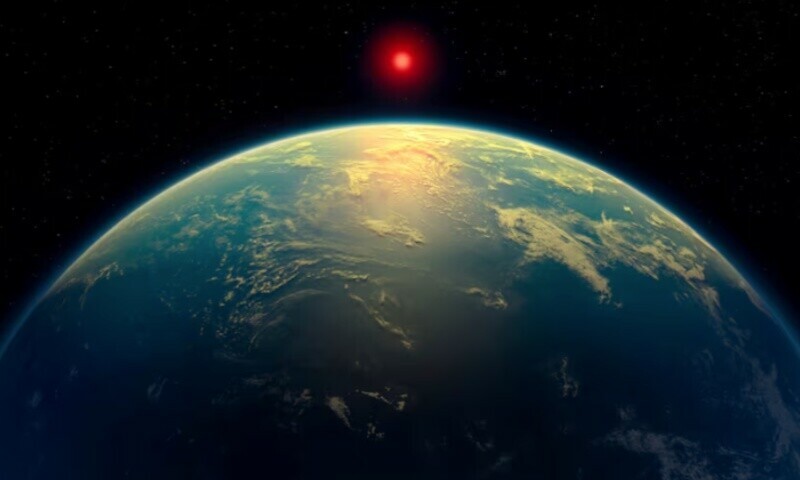

In a potential landmark discovery, scientists using the James Webb Space Telescope have obtained what they call the strongest signs yet of possible life beyond our solar system, detecting in an alien planet’s atmosphere the chemical fingerprints of gases that on Earth are produced only by biological processes.
The two gases — dimethyl sulfide, or DMS, and dimethyl disulfide, or DMDS — involved in Webb’s observations of the planet named K2-18 b are generated on Earth by living organisms, primarily microbial life such as marine phytoplankton — algae.
This suggests the planet may be teeming with microbial life, the researchers said. They stressed, however, that they are not announcing the discovery of actual living organisms but rather a possible biosignature — an indicator of a biological process — and that the findings should be viewed cautiously, with more observations needed.
Nonetheless, they voiced excitement. These are the first hints of an alien world that is possibly inhabited, said astrophysicist Nikku Madhusudhan of the University of Cambridge’s Institute of Astronomy, lead author of the study published in the Astrophysical Journal Letters.
“This is a transformational moment in the search for life beyond the solar system, where we have demonstrated that it is possible to detect biosignatures in potentially habitable planets with current facilities. We have entered the era of observational astrobiology,” Madhusudhan said.
Madhusudhan noted that there are various efforts underway searching for signs of life in our solar system, including various claims of environments that might be conducive to life in places like Mars, Venus and various icy moons.
K2-18 b is 8.6 times as massive as Earth and has a diameter about 2.6 times as large as our planet.
It orbits in the “habitable zone” — a distance where liquid water, a key ingredient for life, can exist on a planetary surface — around a red dwarf star smaller and less luminous than our sun, located about 124 light-years from Earth in the constellation Leo. A light-year is the distance light travels in a year, 5.9 trillion miles (9.5 trillion km). One other planet also has been identified orbiting this star.
discovered since the 1990s. Scientists have hypothesized the existence of exoplanets called hycean worlds — covered by a liquid water ocean habitable by microorganisms and with a hydrogen-rich atmosphere.
Earlier observations by Webb, which was launched in 2021 and became operational in 2022, had identified methane and carbon dioxide in K2-18 b’s atmosphere, the first time that carbon-based molecules were discovered in the atmosphere of an exoplanet in a star’s habitable zone.
“The only scenario that currently explains all the data obtained so far from JWST (James Webb Space Telescope), including the past and present observations, is one where K2-18 b is a hycean world teeming with life,” Madhusudhan said.
“However, we need to be open and continue exploring other scenarios.” Madhusudhan said that with hycean worlds, if they exist, “we are talking about microbial life, possibly like what we see in the Earth’s oceans.”
Their oceans are hypothesised to be warmer than Earth’s. Asked about possible multicellular organisms or even intelligent life, Madhusudhan said, “We won’t be able to answer this question at this stage. The baseline assumption is of simple microbial life.”
DMS and DMDS, both from the same chemical family, have been predicted as important exoplanet biosignatures. Webb found that one or the other, or possibly both, were present in the planet’s atmosphere at a 99.7 per cent confidence level, meaning there is still a 0.3pc chance of the observation being a statistical fluke.
The gases were detected at atmospheric concentrations of more than 10 parts per million by volume.
“For reference, this is thousands of times higher than their concentrations in the Earth’s atmosphere, and cannot be explained without biological activity based on existing knowledge,” Madhusudhan said.
Scientists not involved in the study counseled circumspection.
“The rich data from K2-18 b make it a tantalising world,” said Christopher Glein, principal scientist at the Space Science Division of the Southwest Research Institute in Texas.
“These latest data are a valuable contribution to our understanding. Yet, we must be very careful to test the data as thoroughly as possible. I look forward to seeing additional, independent work on the data analysis starting as soon as next week.”



